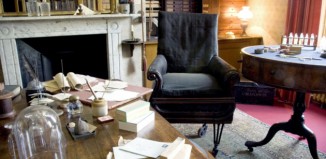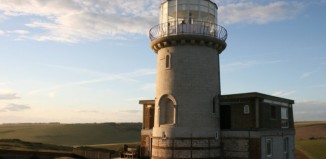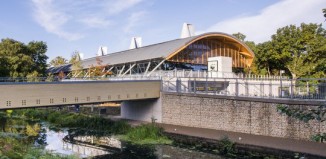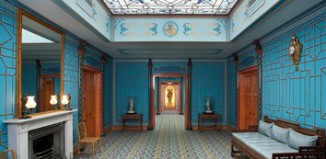Dapdune Wharf
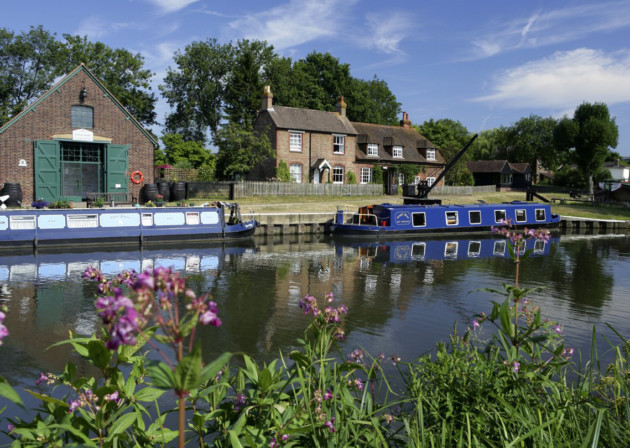
Turn a corner on the busy outskirts of Guildford and suddenly the noise of traffic and people falls away, leaving a scene straight out of a country village. Cottages and ageing outbuildings overlook the tranquil river Wey; pleasure-craft await queuing ticketholders bound for an excursion; and on the opposite bank families and cyclists tour the towpath, catching sight of errant dragonflies or kingfishers as they go. This pervading sense of peace was far from the reality of the 19th century, when Dapdune Wharf employed scores of people tasked with keeping a fleet of barges operational and ensuring the smooth flow of goods in and out.
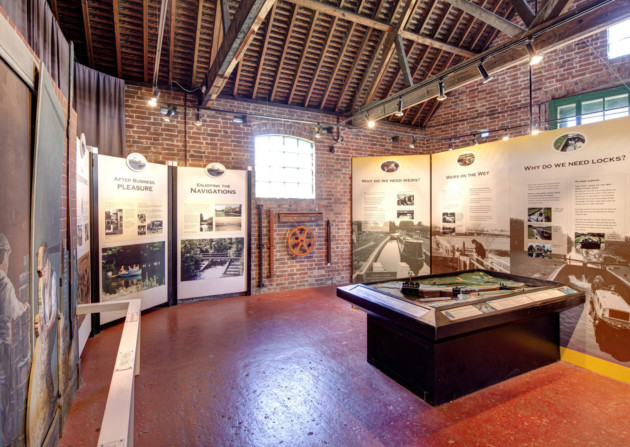
A wharf has stood on this site since 1653 when the Wey Navigation was built, a series of canals, locks and weirs to allow traffic to travel the waterway and on into London. Comprising over 15 miles from Guildford to the Thames at Weybridge, the Navigation was crucial to the development of London. In 1764, a further four and a half miles were added, opening up the river to trade from as far south as Godalming. Although the waterway seems slow to modern eyes, in its heyday it was revolutionary, enabling some 50 tonnes to be hauled via heavy horse into the city within two days. There was no comparison with the old transportation of horse and cart.
“The river Wey was an excellent natural route to take cargo to London – grain and timber were the bulk of the materials, but gunpowder was also transferred from storehouses here,” explains Wharf Manager Tory Stenning. “At that time Guildford town was a good half a mile distant from the wharf, well away from populated areas, and this was an ideal place to keep it. The only report of a gunpowder barge accident was an explosion in 1864, but for safety, the record was otherwise good.” The wharf was never as important as during the aftermath of the Great Fire of London in 1666, when vast stores of timber were sent up the waterway to rebuild the city.
The success of Dapdune Wharf was owed to two families. The Stevens managed the waterway during the 19th century and their rise to success began when William Stevens became lockkeeper in 1812. Scaling the career ladder, he was placed in charge of Guildford Town Wharf by 1823 and in turn his two sons joined forces to buy shares in the Navigation in the 1870s. “This was at a time when the opening of nationwide railways was making canal users nervous about their future, with many relieved to count their losses and sell up,” says Tory. “In 1912 the third generation of Stevens owned the entire Wey Navigation along with a boat building yard and a barge company, which they used to build 11 new barges. It was a lucrative venture. Harry Stevens was the last of his family to work on the Wey in 1936.”
The Edwards family were head hunted by the Stevens to work as barge-builders. The deal was sealed in 1894 when they built the Edwards a cottage on the wharfside – quite a luxury for a family of 12! Edwin Edwards, a master carpenter and barge builder uprooted his family from the Kennet and Avon Canal in Wiltshire and settled at Dapdune, where he and his sons after him, continued the family business.
The wharf would have been a hive of activity with the comings and goings of vessels, alongside the noise and smells of the engines, tar and oil, not to mention the stables where horses were rested overnight, before making the return trip to the city.
This open air museum allows a range of experiences for the visitor. One of the most authentic is climbing aboard Reliance, an original Wey barge built in 1932. Inside an audio-visual display represents life on the river through the ages, following the route of the barge on its journey to London, the toll of Big Ben announcing your arrival. Reliance could carry about 80 tonnes of cargo at full capacity and made hundreds of journeys, a career which met an unfortunate end in 1968 when it collided with Canon Street Bridge. “Somehow she ended up abandoned on the river in Essex,” explains Tory. “The National Trust salvaged her in 1989 and began restoration. Our other barge Perseverance IV, was the last of the Stevens’-built barges. We acquired her in 2010 and plan to restore her too.”
In the wharf buildings visitors can peek at some of the trappings of yesteryear. A replica smithy displays the tools of the day, including a huge pair of manual bellows, an anvil and various mending equipment. It is almost possible to hear the clank of metal on metal and feel the scorching heat of the furnace emitting through the doorway.
At the far end of the site is the original barge building shed. Adjacent to the river it had a folding wall which would lower to allow new or repaired barges to be launched. A far trickier operation was hauling the vessels onto dry land, a task which was undertaken by four men turning the capstans which still stand on the wharfside. A 20th-century addition to the riverbank was a small crane, which ran the length of the wharf on a miniature railway line to access cargo from each barge.
Further exhibits can be seen in the original 17th-century Gunpowder Store, now a hands-on discovery room inviting the visitor to learn about traditional cargoes, try their hand at tying a nautical knot, and investigating the science behind the Navigation on the child-friendly model waterway. Audio points give firsthand impressions of life on the wharf in the 19th century, illustrating the hardships and triumphs.
After the Second World War trade started to diminish but the waterway remained open until the 1960s when the roads and railways finally took over; in 1964 Harry Stevens gave the Navigation to the National Trust.
Today the river is a haven for narrowboaters and canoeists. Seventeen pubs en route ensure refreshment for the journey, and countless sites of interest offer reason to moor up. A stone’s throw from the riverside are the old mills that kept Londoners supplied with their daily bread. In contrast, the National Trust’s Shalford Mill to the south is an intriguing insight into a lost chapter of village life.
The Trust’s own electric launch, Dapdune Belle, is taken out regularly on the Wey for public trips during opening season, a 40-minute trip to take in the heritage and wildlife along the river. Those who prefer to walk can explore a number of circular trails branching off the towpath, many of which lead to more of Surrey’s historic attractions. This pleasant ‘green corridor’ which passes through changing landscapes is one of the most visually interesting journeys in Britain.
For more information on the River Wey Navigations visit Dapdune Wharf, Wharf Road, Guildford, Surrey GU1 4RR. Tel: 01483 561 389. Visit www.nationaltrust.org.uk/riverwey Regular boat trips run from the wharf, weather permitting.

